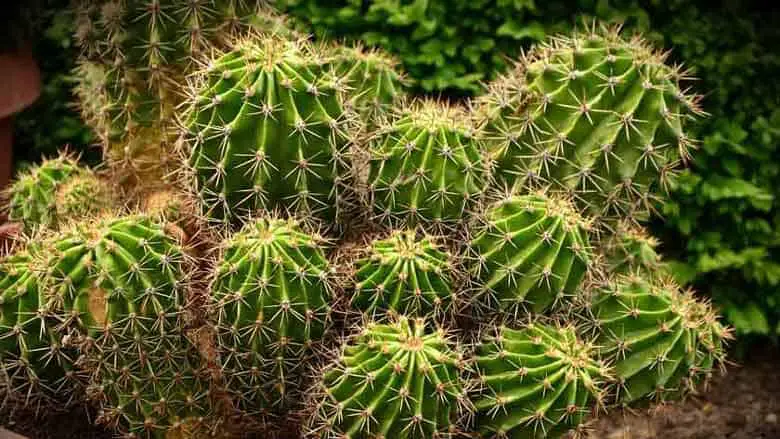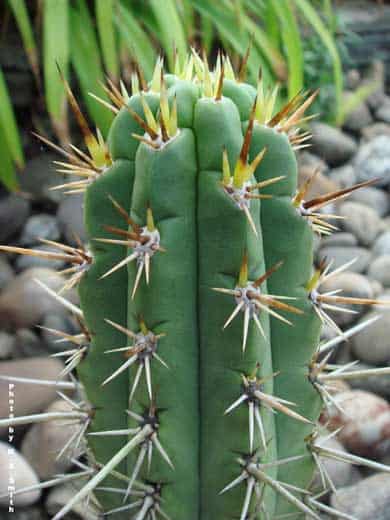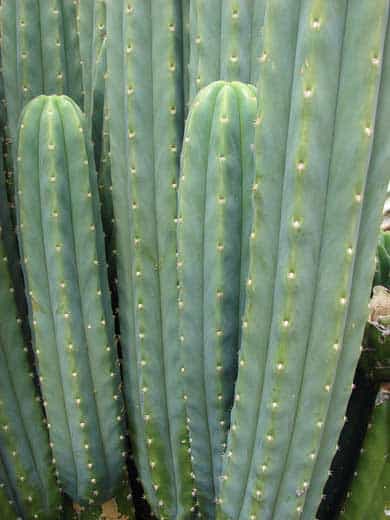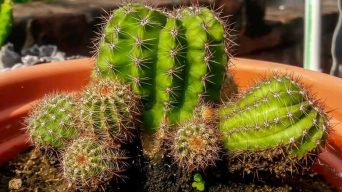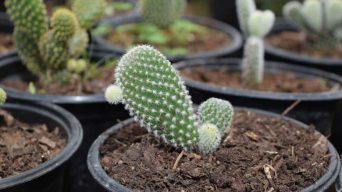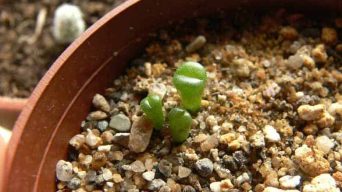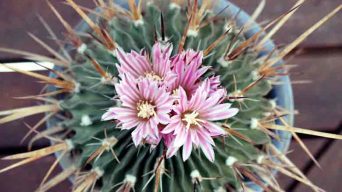Cacti are often thought of as being one of the most dangerous plants in the world. They’re also one of the most popular, with about 2,000 different species.
Cacti are known for their spines and prickly leaves, which can cause injury if touched or not handled properly. The spines and prickly leaves are a natural defense mechanism to ward off predators from eating them or their fruit.
But, are cactus poisonous or dangerous plants? Are they as harmful as they seem?
Are Cactus Plants Poisonous or Dangerous?
Most of the Cacti are not poisonous, but various cacti can be toxic.
There are several different types of Cacti, and each type behaves differently in various environments.
In most types of cacti, the spines can cause injury if touched. Still, they do not contain any deadly toxins that would make them poisonous to humans in general.
For the most part, the cactus plants have various uses and properties that can benefit humans. But some types of cacti can be dangerous.
Some cactus species are highly corrosive to the human skin and may cause a wide range of illnesses when ingested.
These are the cacti you want to watch out for and, if possible, avoid them entirely.
Are There Any Poisonous Cactus Plants?
In general, there are no poisonous cacti. Still, there are some cacti with hallucinogenic properties that you have to be very careful with.
The Peruvian Torch Cactus (Echinopsis Peruviana)
The Peruvian Torch is a cactus that is native to the Andes Mountains in Peru.
It has long, sharp spines and can grow up as tall as six feet high with greenish-yellow flowers on top of its stem, which are followed by edible red fruit pods when they mature.
The Peruvian Torch has a lot of psychoactive properties. It’s primarily noted for its mescaline content. But there are also other alkaloids present that have been shown to cause hallucinations when ingested.
It is dangerous to ingest mescaline, especially in high amounts. It causes severe nausea and vomiting, which is associated with psychotic breakdowns.
San Pedro Cactus (Echinopsis Pachanoi)
The San Pedro Cactus is one of the most popular and well-known types of cacti in South America. It’s a succulent plant that grows in the Andes mountains in Argentina, Chile, Bolivia, Peru, and Ecuador.
They can live up to 50 years old, with heights reaching 2 meters tall on average. San Pedros have long spines which protrude outwards around their bodies, and they grow in clusters.
The San Pedro Cacti have traditionally been infused into drinks by indigenous Peruvian Shamans due to their psychoactive properties.
This led them to believe they could help with insomnia-related problems or illnesses caused by various health conditions such as gastrointestinal issues when mixed with Chicha de Jora.
The San Pedro Cactus contains mescaline, a dangerous drug that can cause visual and auditory hallucinations when consumed without control.
Peyote Cactus (Lophophora Williamsii)
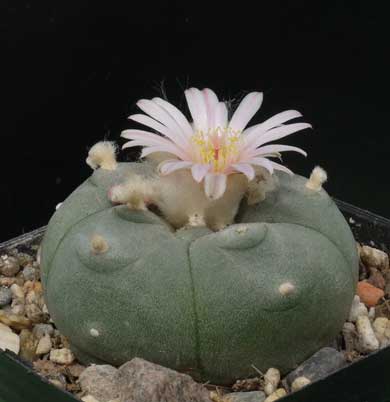
The Peyote Cactus is a rare-flowering plant that grows exclusively in dry climates like those found in the desert regions near Mexico and Texas. They may reach over 10 feet tall and live for more than 100 years.
The flower, which only blooms rarely, can be used as an ingredient for drugs such as LSD. The psychoactive properties of this cactus are due to its high mescaline content.
Peyote is a type of cactus that may cause psychotic breaks when used in conjunction with other substances.
It has also been found to aggravate mental health problems for those who suffer from them already, which poses an additional dangerous effect on people’s well-being and safety.
Canary Islands Cactus (Euphorbia Canariensis)
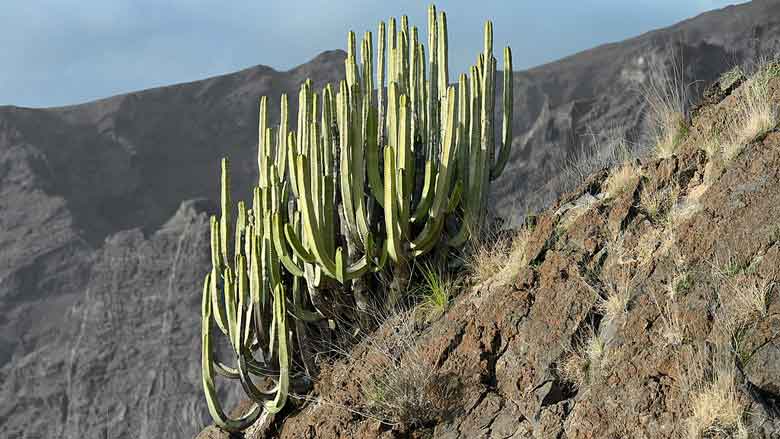
The Canary Islands Cactus, also known as the Cape Fig, is a perennial plant in the family Euphorbiaceae.
The plant has been introduced to many tropical and subtropical regions of Africa and America. Its striking appearance often begins with an ugly brown stem before blooming into large clusters of white flowers around October/November each year.
The Canary Islands Cactus is a toxic plant that cannot be consumed.
It contains the alkaloid cycasin, which can cause liver damage and death if ingested in significant quantities by humans or animals alike (especially dogs).
Bolivian Torch Cactus (Echinopsis lageniformis or Achuma)
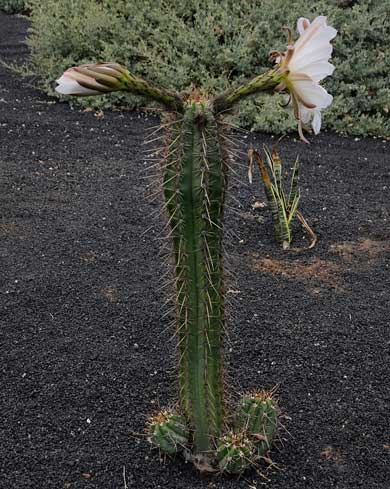
The Bolivian Torch Cactus is one-of-a-kind in its design, with starring roles among other plants.
It features spikes from 3 to 8 inches at any given point along the edges where they meet another plant branch or stem.
It also sports a pinkish-red flower and spines about 2 feet long, making this cacti tree perfect, both as an outdoor or indoor plant.
This plant also contains mescaline, a substance responsible for hallucinations and psychedelic effects in certain drugs such as LSD or Ecstasy.
Are Cacti Safe To Eat?
Cacti are a type of succulent that can be eaten as food. Cacti can be eaten and typically are not a poisonous plant, though some can have toxic looks.
The word “cactus” comes from the old French word “Cornus”, meaning “fruit-tree”, which means that it’s safe as long you eat only its fruits.
Cactuses often get a bad reputation for being full of harmful substances. Still, they contain a lot of good nutrients.
The cactus pad and the cactus fruit are both high in fiber and vitamins.
You have to be careful not to eat any parts of cactus other than those considered edible. Some types may contain dangerous chemicals or spines.
Some notable parts of those plants that people can eat are fruits, leaves, and pods.
Are Cactus Fruits Poisonous?
Cactus fruits are not poisonous. They contain water and a lot of sugar.
The Cacti fruit is also known as Prickly Pear or Indian Figs, which sounds like it would be pretty uncomfortable to eat.
Still, their fleshy texture turns out similar to an apple or honeydew melon.
What Kinds Of Cactus Fruits Are Edible?
Prickly Pear
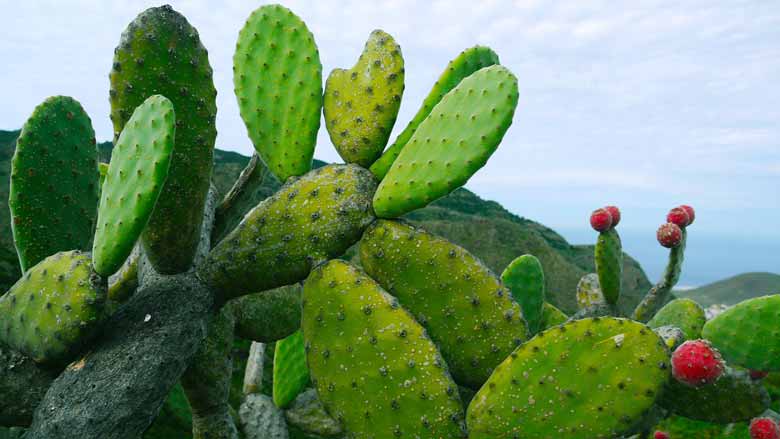
Prickly Pear Fruits are the most popular type of fruit in Mexico. They have a velvety, orange skin, traditionally peeled off before eating them with their yellow flesh inside for flavor and nutrition.
Dragon Fruit (White Fleshed Pitahaya)

The Dragon Fruit is a lovely-looking, spherical-shaped, and greenish-yellow colored tropical plant.
It has the texture of jello when raw. Still, it doesn’t taste like anything because the inside is full of peppery seeds with sour undertones.
The Dragon Fruit looks very much like an apple or pears. Its shape is round and covered in a thin layer of skin while maintaining some level between light to dark shades for colors.
However, this particular fruit’s flesh can be described as having more jelly than, say pear, since there aren’t any pits within them.
The insides contain small black seed pods, which have been known to give off quite intense flavors.
Barrel Cactus Fruit
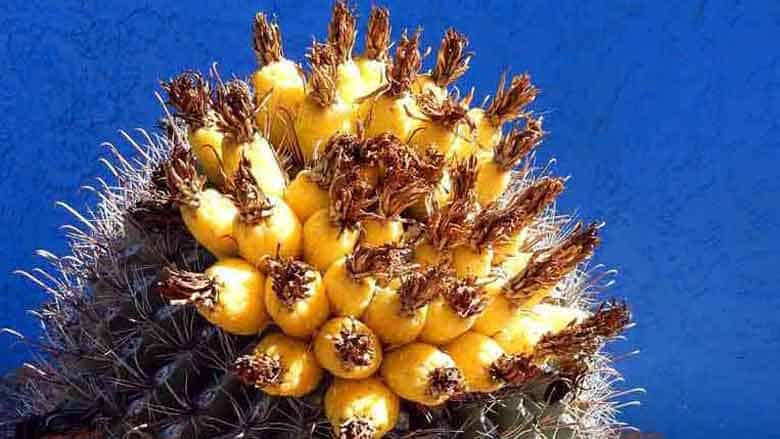
The Barrel Cactus produces a round fruit with yellow skin that has white prickles.
The taste ranges from sweet to tart and is said to be somewhere between watermelon, honeydew melon, and the flavor of grapefruit or pineapple, depending on which variety you eat.
Saguaro Fruit
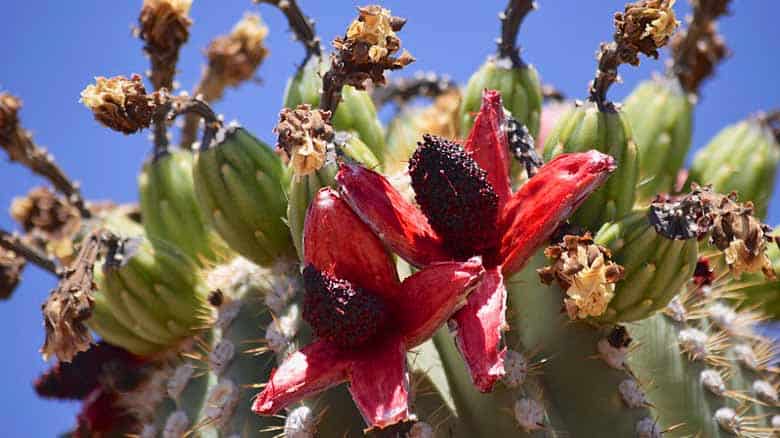
The Saguaro Fruit tastes like a cross between an apple and dried apricots. Native to the Americas, they are grown in Sonora, Mexico but can also be found in Arizona, New Mexico.
The Prickly Pear Cactus that produces this succulent has been called “a desert bonsai tree”.
The sharp spikes along each side of their bodies deter potential predators. It is difficult to access the plant while providing shade over small mammals when climbing up plants during daytime hours.
Cereus Peruvianus Fruit
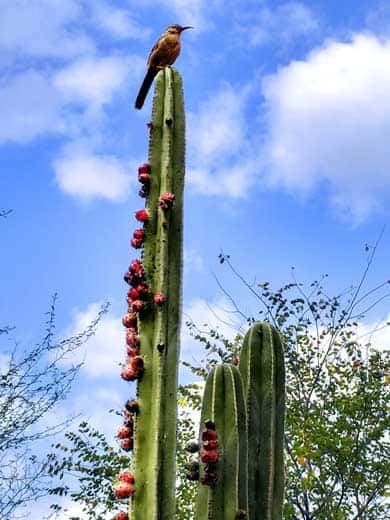
The Cereus peruvianus Fruit, also known as the Queen of Nectar Fruits, is found in southern Peru and northern Chile.
It’s a desert plant that European explorers first discovered on their expeditions to nearby regions at high altitudes.
The fruit has been used for centuries to treat many ailments such as arthritis and kidney problems.
It contains hefty levels of sterols like beta-sitosterol, which help with inflammation relief.
Can You Drink Cactus Water?
Cactus water is the name given to a liquid obtained from Cacti. The liquid has a high concentration of sugars and minerals such as potassium, calcium, magnesium, and phosphorus.
There are many different types of Cacti, but they all produce similar liquids that can be extracted by slicing open or cutting off one end of the plant.
You might be worried about drinking Cactus water since most people have a fear of consuming poisonous substances, though worry not! Cactus water isn’t poisoned.
This type of drink, originating from Mexico and South America, has its roots in the indigenous peoples’ attempt to collect rainwater without getting wet or dirty.
Modern science shows that while this process does involve some toxins (from a spiky plant), these are all filtered out when boiling it for 5 minutes as needed by cooking guidelines.
The liquid can be consumed as a refreshing drink, or it may also have medicinal purposes.
The cactus water is often used to treat dehydration, diarrhea, and other stomach problems because of the high sugar levels.
Are Cactus Spines Poisonous and Dangerous?
As many people know, Cactus spines are like tiny little hypodermic needles.
The prick of a needle can feel quite terrible, and it may seem as if there is something toxic or irritating in the spine that makes them hurt even after they’ve been removed.
The truth behind this pain comes from the way these spines themselves work, kind of like microscopic barrels with razor-sharp edges inside.
A puncture by one will leave you very sore and uncomfortable for some time to come because each spike has its own barb on top. This was specifically designed so animals don’t get any ideas about nibbling at their juicy insides.
Are Cacti Poisonous To Cats, Dogs, and Other Pets?
Let’s explore the world of Cacti and their toxicity for cats, dogs, and other animals.
Vets warn that it’s essential to keep a close eye on your pets when they are near plants with thorns or spines, as these could lead to injury if left unattended.
A Cactus spine can be very sharp so make sure you wear gloves before handling them not to prick yourself!
Some Cactus types contain substances that should never come into contact with any animal, such as the succulent Opuntia ficus-indica (Prickly Pear).
Venomous varieties include Euphorbia Tirucalli (Spurge) found throughout North America; and the Ferocactus Wislizenii from South Africa.
Which Common Cacti Are Non-Toxic to Pets?
Christmas Cactus

The Christmas plant is very popular as it can be enjoyed all year round.
Cacti are usually green or have some form of red mixed in with the leaves and flowers, making them perfect during winter.
Like other plants, they need water but not too much. If you give them the wrong amount of water, then their beautiful colors may change, making it less appealing on your tabletop!
Opuntia Cactus
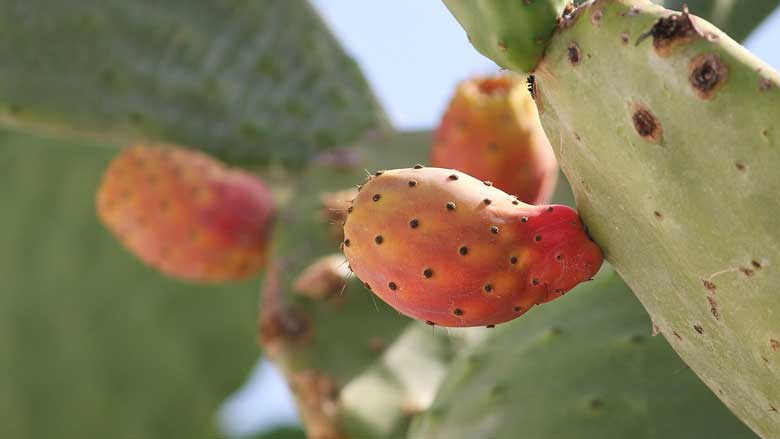
The Opuntia cactus plant is a perennial or annual plant that is native to North America. The most common of these plants, called prickly pear, have spiky pads which grow up as many as twelve inches in height.
These unusual-looking structures make this Cactus species distinctive from other members within its genus, such as Nopalea Cholla and Mammillaria, among others.
It can be found on dry soil like desert sand dunes and thrive well when planted close together.
Thimble Cactus
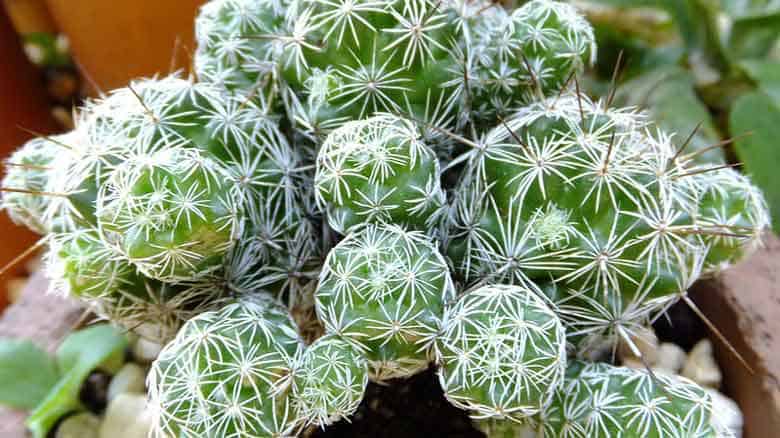
This prickly plant is the only member of its genus and grows to about 12 inches, with star-shaped white flowers.
It has a small stem that can grow up to 8 in height before it blooms into an impressive spiky flower bed!
The Thimble Cactus prefers dry climates because they store water within their body when growing near rivers or pools, which helps them survive during extended periods without rain.
These cacti also like cool nights, so native environments like mountain slopes are perfect for this type of desert dweller!
Hylocereus Undated
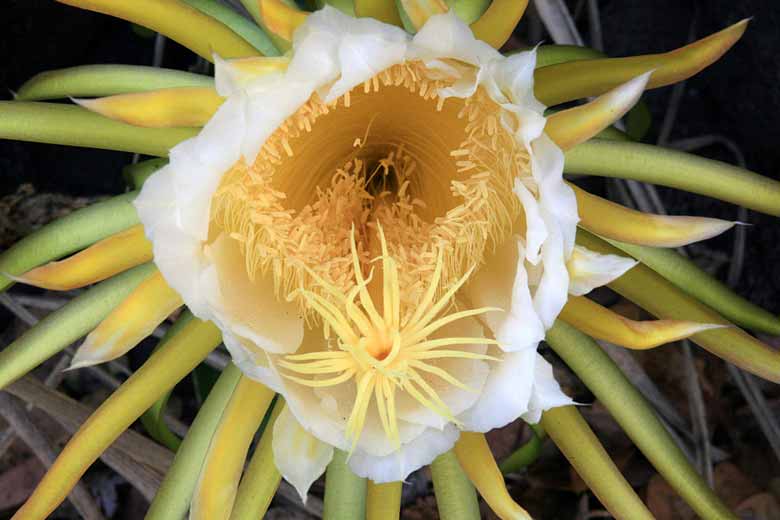
The Hylocereus is a type of cactus that was named after the Greek god, Hello.
The plant’s flowers are not only beautiful but also very fragrant, and they produce one of the most important natural fibers in history – jute fiber.
Hylocereus is a genus of night-blooming cactus and an interesting plant to have in your garden.
They bloom during the evening and stay open all through the night, adding this glowing beauty that will come alive for those who live there at nighttime.
Can Cacti Cause Allergies?
Cacti can cause allergies, but they are not the only plants that do.
People with Cactus allergies also tend to have reactions from other types of plants. The most common culprits are poison ivy and oak trees.
The most common reasons for allergic reactions include pollen or pet dander (tiny particles found in animal fur).
These allergens can be carried by wind currents and deposited on your skin or clothing when you enter a building through open windows, doors, or vents.
Cactus flowers can cause allergies. Cacti pollen is a major allergen, and it’s often found in homes with Cactus plants because of their large blooms.
Final Thoughts
Cacti are not always dangerous, but they can be.
There are many myths about cacti being poisonous or dangerous. The truth is, they’re not as harmful to humans and animals.
There are many different types of cacti. Each has its level of danger depending on the species, where it was grown, or how long ago it last shed needles from within its body.
It is essential to know the type of plant you’re dealing with before touching it or eating anything from them.
This is because some may cause allergic reactions, and others might contain toxins that could harm your body if ingested.

